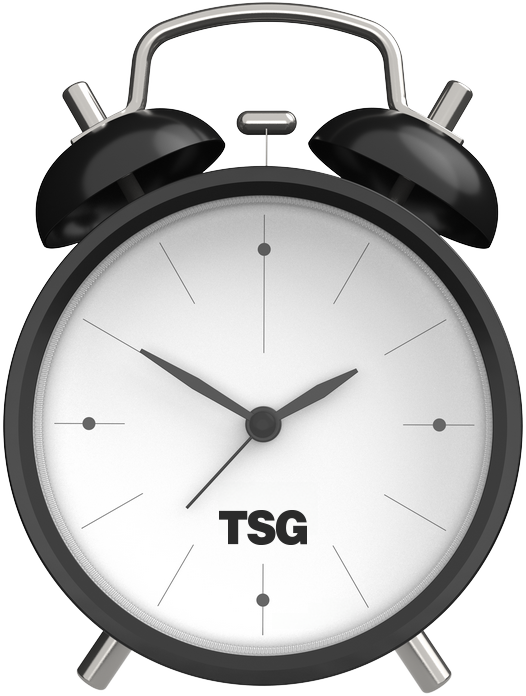Every day, you’re faced with decisions that shape your life, yet it’s not just about choosing left or right. It’s about understanding the complexity interplay of emotions and logic within your brain. Have you ever wondered why some choices seem clear in hindsight? It’s because your brain regions, like the anterior cingulate cortex, are constantly weighing options, often without you realizing it. Let’s unpack how these processes can be harnessed to make decisions that align more closely with your goals.
Why Decision-Making Matters
Every day, individuals face several choices — some simple, others complex. The types of decisions vary depending on the problems, the available data, and the urgency for resolution. Good problem-solving isn’t just about picking an option; it’s about making a thoughtful assessment based on real information and diverse perspectives.
When the situation becomes more complex, decision-making becomes less about finding one perfect solution and more about identifying the best possible result among many.
Key Factors In Effective Decision-Making
Becoming a better decision-maker involves understanding key factors that influence outcomes, such as:
- The number of options available
- Quality and reliability of data
- Input from colleagues and team members
- The specific state or condition of the problems
- The potential result or impact of each option
An effective leader recognizes that gathering feedback and considering different ideas is essential for robust decision-making, especially when working with a group.
How To Make Better Choices Every Day
Choosing the right place to focus your efforts starts with refining your knowledge and sharpening your ability to evaluate solutions. Decision-making isn’t just about making a quick call; it’s about thoughtful, informed action — the hallmark of strong leadership.
Remember, the effective goal isn’t perfection. It’s about making the best possible decision with your current information and resources. Over time, practicing effective decision-making will empower you to lead with confidence and purpose.
1. The Role of the Brain in Everyday Decisions
When making everyday decisions, your brain activates specific areas like the anterior cingulate cortex (ACC) and the orbitofrontal cortex, essential in balancing emotional and rational elements. Cognitive biases and the somatic marker hypothesis influence this intricate decision-making process. The latter suggests that your emotional experiences help guide your choices, signaling potential benefits or risks, drawing on past outcomes. Cognitive biases, such as the availability heuristic, can skew your judgment by making you rely on immediate, easily recalled information. Together, these elements shape how you weigh options, often without you realizing it.
2. The Impact of Emotional and Mental Baggage
Building on the understanding of how your brain governs decisions, it’s important to reflect on how emotional and mental baggage further complicates this process. Mental baggage, including past traumas and unresolved emotions, can cloud your judgment, leading to irrational or impulsive choices. You might find yourself stuck in analysis paralysis, overthinking each option because you’re afraid of repeating past mistakes. This fear can freeze you in your tracks, preventing timely decisions.
Recognizing and managing this baggage is essential for clearer, more effective decision-making.
3. Intuitive vs. Rational: Understanding Decision-Making Styles

Recognizing this can greatly enhance your decision-making effectiveness, especially in complex situations.
3.1 Balancing Gut Feelings
Understanding whether you rely more on intuition or rational analysis can improve your decision-making skills. When you make decisions, knowing if you lean towards intuitive decision-making, which uses gut feelings and past experiences, or rational decision-making, involving methodical analysis, is essential. Intuitive decisions are quick and suited for everyday choices, but can lead to mistakes if not checked by rational thought.
Conversely, logical decision-making, structured by models like DECIDE, helps in complex scenarios but might slow you down with its thoroughness. Awareness of your predominant style helps balance these approaches, ensuring you’re quick on your feet when necessary, yet detailed when it counts, leading to better outcomes in all spheres of life.
3.2 Analyzing System 2 Use
In analyzing System 2 use, it’s vital to recognize when deliberate and analytical thinking is necessary over intuitive responses. Your prefrontal cortex plays a fundamental role in this slower, more rational approach, especially when making decisions that require careful consideration. By understanding the differences between System 1 and System 2, you can better manage the cognitive biases that often undermine effective decision-making.
4. Strategies for Overcoming Analysis Paralysis
When faced with too many choices, it’s easy to fall into analysis paralysis, where making any decision seems overwhelming. To counter this, you can adopt specific strategies that streamline decision-making process.
- First, limit your options.
- Furthermore, set clear criteria for what’s important in your decision. This approach helps you quickly eliminate less relevant options. Ultimately, impose a time limit on your decision-making.
5. The DECIDE Framework: A Tool for Better Choices

As you explore tools for improved decision-making, consider the DECIDE framework, a systematic method that guides you through a series of clear steps to make better choices.
- Start by defining the problem clearly; clarity here is vital.
- Next, establish criteria to evaluate your options.
- This structured approach guarantees you’re comparing alternatives based on what genuinely matters. Then, consider different options.
- Limiting your choices prevents you from being overwhelmed and speeds up decision-making.
- After selecting the best option, develop a concrete planning to execute your decision.
- Finally, don’t forget to evaluate the outcomes.
This last step helps you learn from each decision, refining your ability to make choices in the future.
6. The Importance of Time Management in Decision-Making
Understanding the pivotal role of time management in decision-making can remarkably enhance the quality of your choices. Adequate time reduces the risk of impulsive decisions often spurred by high stress under tight deadlines. By pushing back these deadlines, you allow yourself the space to evaluate outcomes more thoroughly, leading to better informed choices. Effective time management encourages you to contemplate potential consequences deeply, ensuring your decisions are well-rounded and more likely to lead to positive outcomes.
7. Mindfulness Techniques to Enhance Decision Quality

While time management plays an essential role in decision-making, incorporating mindfulness techniques like meditation and deep breathing can greatly enhance the quality of your decisions and productivity.. These practices reduce stress, increase clarity, and improve your emotional regulation, helping you make more rational choices.
8. Evaluating and Learning From Past Decisions
As you reflect on your past decisions, it’s essential to employ reflective analysis techniques to understand the outcomes and improve your decision-making process. Examining how well your choices aligned with your goals’ll uncover valuable strategies to enhance future outcomes. This retrospective approach sharpens your judgment and helps you spot and correct biases that might skew your decision-making.
9. Reflective Analysis Techniques
To enhance your decision-making skills, employing reflective analysis techniques that systematically review your past decisions is crucial. Here’s how you can incorporate these methods effectively:
- Maintain a Decision Journal
- Assess Reasoning and Outcomes
- Practice Mindfulness
- Use the DECIDE Model
Frequently Asked Questions
What Are the 3 C’s of Decision-Making?
You’re asking about the 3 Cs of decision-making, essential for effectively tackling choices. They include Clarity, where you define the problem and set clear criteria; Confidence, ensuring you believe in your decision based on evidence and deliberation; and Commitment, which involves sticking to your choice to minimize regret and improve future decisions. Mastering these elements helps you navigate both simple and complex decisions more successfully.
What Is the 10-10-10 Rule for Decision-Making?
The 10-10-10 rule is a simple strategy for making thoughtful decisions. You consider how a choice impacts you in 10 minutes, 10 months, and 10 years. This method helps you weigh short-term satisfaction against long-term benefits, giving you a clearer picture of the consequences of your actions. It’s especially useful when you’re torn and must prioritize your options based on their potential long-term outcomes.
What Is the Science of Decision-Making Called?
This field is called decision science, encompassing elements from psychology, behavioral economics, and neuroscience. It explores how you evaluate options, predict outcomes, and are influenced by cognitive biases and emotions.
What Is a Famous Quote About Decision-Making?
You’re curious about famous quotes on decision-making, a topic filled with wisdom from notable figures. Peter Drucker once said, “Whenever you see a successful business, someone once made a courageous decision.” This highlights how essential bold, decisive actions are to success. Remember, every choice you make not only shapes your path but can also define the success of your endeavors. Keep this in mind as you navigate your decisions.
Conclusion
To summarize, mastering decision-making is essential for maneuvering through daily life effectively. By understanding your brain’s role and balancing emotional and rational influences, you’re better equipped to tackle choices head-on. Use frameworks like DECIDE and mindfulness to combat analysis paralysis and enhance decision quality. Always take time to reflect on past decisions to refine your approach continuously. Remember, every decision is a step towards realizing your priorities and values. Make them count.




















